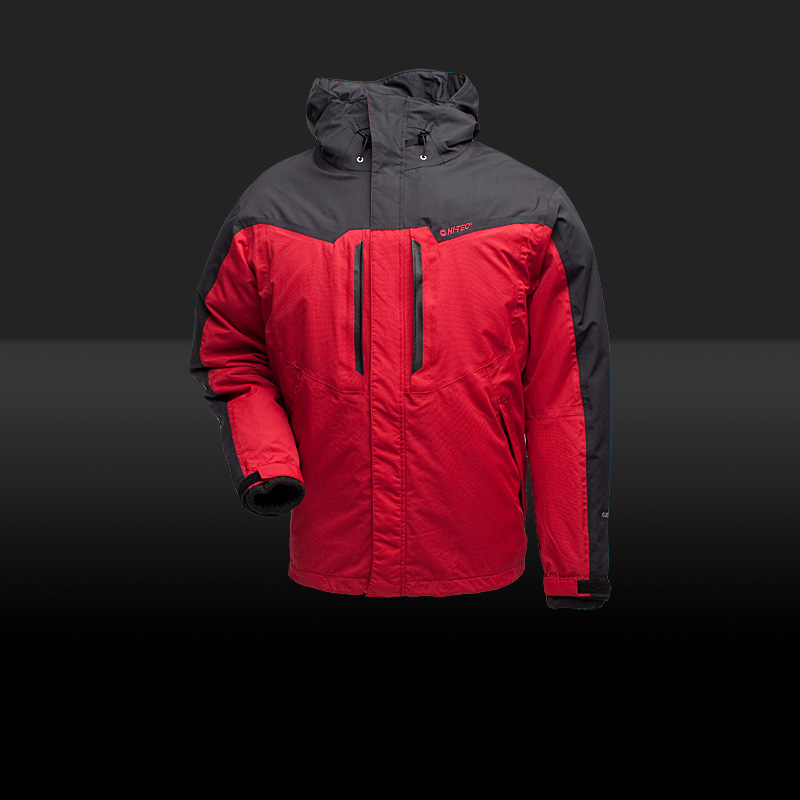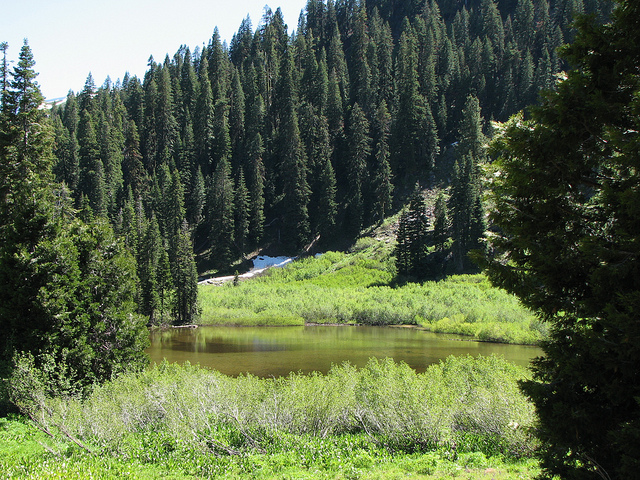Hiking Equipment and Gear
There are many different types of hikes. There are hikes that range from about 1 mile with no elevation to hikes which can go on for days and reach thousands of miles and feet of elevation. Equipping yourself with the right hiking gear is a delicate balance between cost and functionality, which means a touch of financial planning may be necessary. Not to mention, it is important to know which kind of hikes you will do so you can get the right gear, supplies and equipment to fit your needs.

Hiking Boots For Long Hikes
Hiking boots and various types of shoes you can wear are probably the single most important type of equipment you can have on a hike. Most of the time, the boots are the only thing that touches the ground. When buying or choosing hiking boots, one of the most important qualities of a hiking boot is the type of traction it will provide you on your hike. If you are going to be hiking through rugged terrain, you will need to make sure that your hiking boots give you enough traction.
Usually boots with good traction can be also big. Big boots tend to be heavy so when you are considering what is the right pair of boots for you on longer and more rugged hikes, try to balance good traction with being rugged enough, but also light enough. One note of caution is that heavy boots may be very protective of your lower legs and ankles, but they may put too much stress on your knees, hips and back. On longer hikes, that can cause injury. So having lightweight, protective, rugged, and comfortable shoes is very important.
Hiking Boots For Short Hikes
For shorter hikes, ruggedness is not as important. Comfort and enjoyment are the most important. People who do shorter hikes also tend to do more of them so it is necessary to choose shoes that are comfortable for you so that you avoid risk of injury or even blisters, so that you can maybe do the same hike the next day.
Hiking Socks
Just as runners need very comfortable socks that do not cause blisters, hikers do as well. It is rare to feel the blisters during the hike, but the post-hike experience can be pretty irritating if you wore bad socks that caused you to have blisters on your toes and the soles of your feet. Most of the time people focus on boots and gear when it comes to hiking, but something as simple and inexpensive as hiking socks can really help you have a great experience during and after the trip.
Hiking Pants and Shorts
If the weather is sunny, most people would likely choose a pair or shorts over pants. If you are going on a short hike or a walk, that is fine. But if you are going on a longer hike, consider whether the climate in the area of the hike is the type of climate that changes often. If it does, you may want to wear pants instead of shorts. Another good reason to choose pants instead of shorts is when you are hiking through shrubs, the pants can help you avoid scratches on your legs from the bushes and shrubs. Plus if you are hiking in places that may have poison ivy, you should definitely try to wear pants as they may protect you in case you actually come in contact with the poison ivy.
Hiking Jackets
Jackets are really mostly needed on long hikes or through hikes with rugged terrain. One of the most important aspects of a hiking or a trekking jacket is how well it fits. On a long hike, a jacket that flaps or does not fit well will wear you down and cause you to be uncomfortable. What you need is a jacket that fits perfectly when you zip it up or leave unzipped. A jacket that fits well will feel protective and will keep the warmth of your body within. It will also help to protect you from injury if you fall or hit something.
Hiking Hats and Visors
Hats for hiking are divided into two different and very opposite categories. There are the hats to protect you from the sun when you are walking in sunny areas, and then there are the wooly warm hats to keep you warm in cold weather hiking such as snow-shoe hiking for example. In hot and sunny weather, you can try to pick hikes that are in forests dense with trees so that you also get some natural shade in addition to what your hat provides. And in case you are hiking in cold weather, make sure your hiking jacket also has a hood to help protect you from the rain since most wooly hats will get wet and soggy if it starts raining.
Hiking and Walking Sticks
Hiking sticks help hikers protect themselves from injuries to their knees, ankles, hips and other joints that come from the repetitive stress of going on many hikes, each for many miles. Hiking sticks come in two main types. There are the very light sticks which fold, and help with joint support on hikes. These sticks do help, but they will not give too much protection or hold you up in case you are falling. If you are falling and try to rely on them to prop you up, they may break and make matters even messier. The good thing about such sticks is that they are not too much of a nuisance on long hikes if you have to carry them.
There are also hiking and walking sticks that are made up of natural wood. They are usually a little more expensive and can be much more expensive as the quality of the workmanship and the wood increases. The great things about such sticks is that they tend to be beautifully made and feel very sturdy. The unfortunate part is that they are also inescapably heavier than the flimsy sticks that fold. In either case, they are designed to help support you and your joints on longer walks and hikes so you can help protect yourself from injury.
Hiking Water Bottles
It is great to bring along a water bottle on your hikes. Some water bottles even help you keep water cool and warm (whichever you prefer). On longer hikes, they are almost a necessity because on long treks you lose so much of your body's natural water stores that you need to refill them and get back to your regular hydration levels. If you run out of water in the wilderness it can be a bad sign. Some people resist bringing water bottles because they tend to take up too much space and be bulky, but the discomfort is worth the effort.
Hiking Food Containers
Most hikers bring along a backpack in which they pack their food. Some mid-length hikes do not warrant bringing an entire backpack because it is too bulky and uncomfortable. If you like to travel light, it might be a good idea to simply bring along a lunch-box type of a container for your food. Most people just opt for a backpack. Keep in mind that a backpack is not always good for your back, and some hikers try to avoid bringing one along when possibly. Another option in helping to avoid bringing an entire backpack is to buy a pack that ties around your waste. These usually have compartments for your water bottles and food.
Hiking Backpacks
On long hikes and treks, it is probably necessary to bring a real backpack. You can keep extra layers of clothing in your hiking pack, store extra food and water as well.
Two-Way Radios For Group Hikes
If you are leading a hike, or helping to lead a group of hikers through some wilderness or a park, the group tends to stretch out in length. Many hiking group leaders team up with one person leading the hike and another person leading the lagging hikers to make sure they are ok and do not get lost. Naturally, the front and back leader can not talk and get organized. For that reason, some hiking group organizers bring 2-way radios in order to maintain contact throughout the trip.
GPS For Your Hikes
Global satellite positioning (GPS) technology has made hiking and being out in the outdoors much safer than it had ever been. A person who brings along a GPS unit is never really in danger of being lost. All you have to do is follow the screen on the GPS unit and you will quickly realize where you had gone wrong, and what the quickest rout is that will lead you back to civilization.
There are only two things that can go wrong:
- The GPS unit may run out of batteries. You can account for that by bringing extra batteries for your GPS unit
- The GPS unit may suddenly break. To account for your GPS unit suddenly breaking, you can carry two GPS units which is a bit extreme, or use the GPS on your smart phone. In general using the phone GPS is not recommended as the phone battery should be preserved in case you actually need to make a phone call in case of an emergency situation.
Bring a Pair of Binoculars
If you enjoy hiking for the scenery and the opportunities to spot wildlife, you should definitely consider bringing along a pair of binoculars. Birders especially should bring along a pair of binoculars with strong lenses because many birds can only be spotted from afar as they soar in the skies or sit somewhere far.
Camera For Taking Memorable Photos
It is great to have photos of the trips you took and the adventures you got yourself into. If you have room and are willing to carry a camera, or just like to take photos from your phone, here are some tips on taking hiking photos.
Biking
Hiking is great, but if you need a change, biking outdoors can be just as good for your health. Check out some biking gear and see if you want to add some biking to mix with your walking routines.

